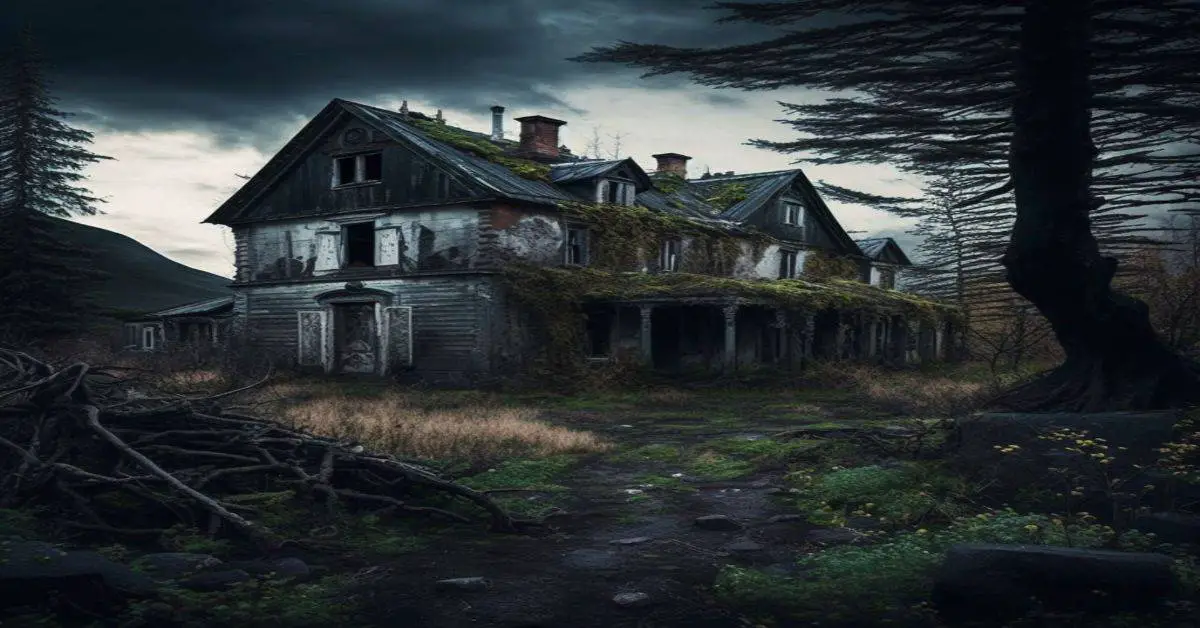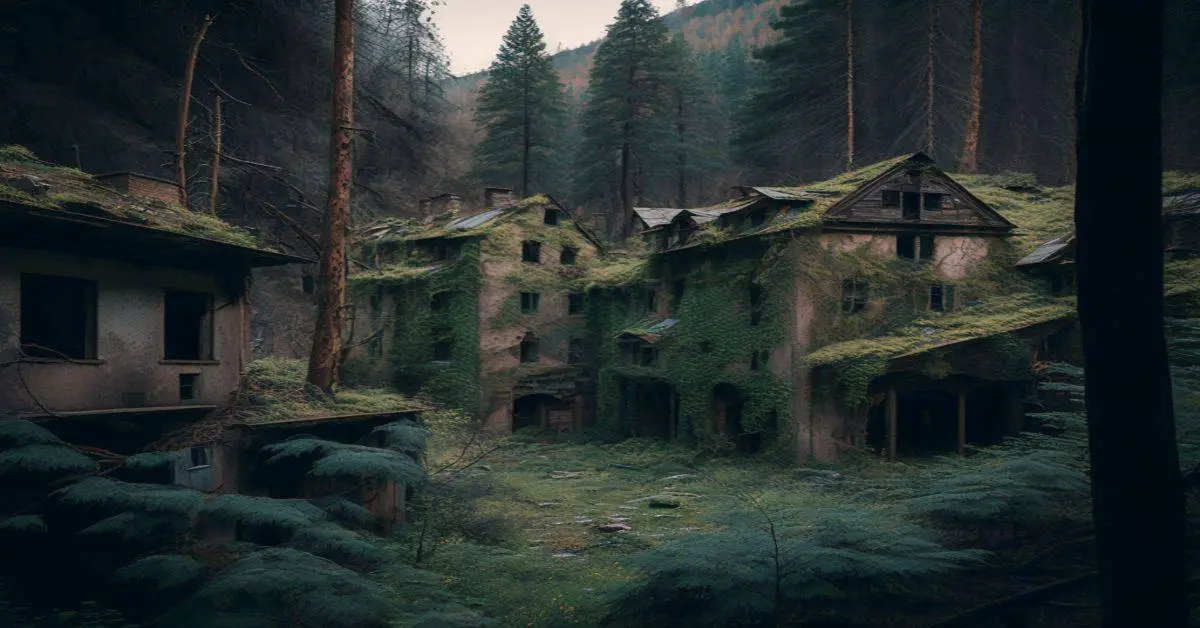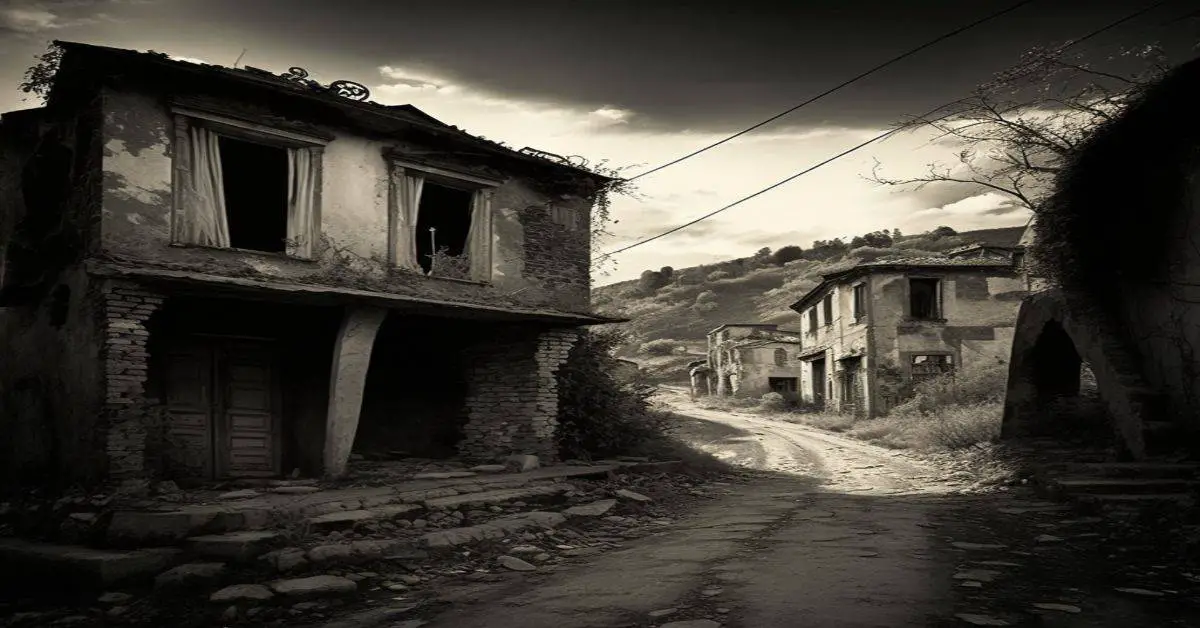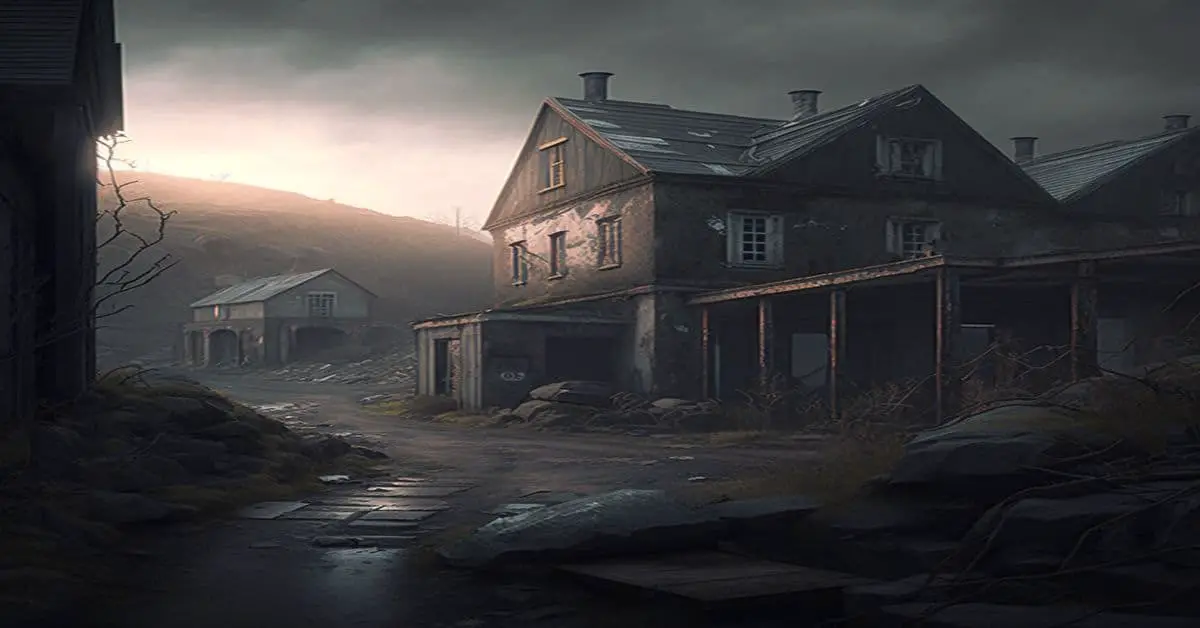Ghost towns are far from what you may think they look like. True, some of these locations still have buildings standing, and others can be found with scattered debris on the ground, but there is more than meets the eye here; for every structure that remains after years pass by – usually because nobody has lived in them since shortly before its closure- many more disappear without any warning whatsoever leaving only ruins as clues about their past existence.
A town once bustling with life will often become eerily silent except perhaps for animal noises such as birds chirping, which make up part of their own soundtrack to everyday living until everything suddenly becomes quiet one day.
When you think of scary movies, abandoned buildings probably aren’t the first thing that comes to mind. But for some people living in America’s heartland region- the Midwest- these places are all too real and hold dark memories.
This fall, when we enter into the frightening yet fun holiday, Halloween, including haunted houses, instead, trade them out with reality because this time around, I want us to explore 18 American Ghost Towns where there were once towns filled with so much life. Still, now nothing remains except overgrown dirt roads.
Shaniko, Oregon
When the wool capital of America was founded in 1901, it didn’t take long for Shaniko’s industries to boom. At their peak during World War I, producers collectively made $3 million per year – not bad, considering they had only begun generating revenue five years prior!
By then, even this small town couldn’t contain all these new residents’ needs; within ten years, population growth outpaces any other industry or opportunity leading many away from here towards something better, but not without leaving behind some ghostly remains first.
1911 was devastating for Shaniko; during these 12 months, its mayor was shot and killed while walking down Main Street to meet with town leaders. The Columbia Southern Railroad Line relocated, taking away any chance this once thriving economy may have had a recovery – but not all hope is lost!
This tiny Central Texas community has managed over time by hosting several popular annual events such as tractor pulls or Rib Cook-Offs, which help keep their traditions alive and educational opportunities through daily tours available during certain hours.
Nevada City, Montana
Nevada City, Montana is an oxymoron; it’s a living ghost town and a delight to visit. This once-quiet mining community was destined for destruction until one ambitious family restored the streets between 1945 – 1978 with help from their son.
The latter had grown up there after being born in Nevada City during its height as well! Today you can tour all aspects of life back then through living history museums throughout this vibrant little town where everything comes alive during the summer months.
Bannack State Park, Montana
The Gold Rush in Bannack State Park is a great way to get an authentic look into the early days of America. The town was initially founded due to its first significant gold discovery, which caused population numbers to increase.
Economic output grew exponentially, but as time went on, this trend didn’t last forever because eventually, all minerals became less valuable than they were before, so even though there are still some buildings left over from when boom times were here, such as those made out log or frame material that gives you feels like being right back onto Main Street during frontier days.
Cody, Wyoming
Wyoming is a wild, wondrous place, and Cody captures the mystery of this Cowboy State. The former stomping grounds for Buffalo Bill has so much history that it’s impossible to catch all in one trip, but you can easily spend days exploring these historic sites when they’re open outside hours! Is one site worth checking out while here?
The Irma Hotel was built by none other than “Wild” William Julius Fremont, who gave us Sitting Bull steamboat fame to his credit (though not without controversy). The room rates may be high at five dollars per head; however, visitors are allowed inside Queen Victoria’s bedroom, where she once slept.
South Pass City, Wyoming
The mines of South Pass City are a proud part of American history. The town was once home to many thriving goldmines. Still, by the late 1800s, these had significantly diminished in value and continued operation into 1949 when Carissa Mine finally closed its doors for good after being opened again during a major restoration project organized by locals with help from federal government organizations like National Park Service.
They took over management duties following the closure resulting in today’s Contemporary Museum Complex being built around the historic site, which includes a visitor center showcasing artfully displayed artifacts while also remaining operational milling facility where you can tour original structures.
Bodie, California
Bodie, California, is a ghost town once home to nearly 10,000 people. By 1880 the promise of gold had attracted such an enthusiastic population, but by 1900 interest in this elusive metal had begun fading away, leading Bodied’s remaining residents out on their own with no hope left behind them- leaving only abandoned buildings and cemeteries making for one eerie experience after another when you visit these parts today.
Calico, California
Calico is a town in California that was once an Old West mining community. After silver lost its value, prospectors continued to find new opportunities elsewhere. Still, they left this area behind, just as they had done with so many other towns along the path toward more incredible wealth or fame.
Today, you can still visit what remains of Caligos’ historic center while camping overnight if your adventurous side gets tiresome from exploring all areas around it. This small settlement became famous after gold Was discovered there in 1848, which brought plenty more settlers into these parts because
Goldfield, Arizona
Goldfield, Arizona, is the ideal place to visit if you’re looking for a taste of history. This small town was home to its day-to gold ore that was discovered in 1892, and it had an official post office just two years later!
But sadly, like most towns built on precious metals or minerals (it’s also where we find copper), Goldfields’ population dwindled over time as these resources started running low – only 500 people called this desert community their own at one point during boomtown days five long years ago; however today there are still plenty around who remember those heady days well enough so they can tell.
Ruby, Arizona
Ruby was once a thriving town in Arizona, but its proximity to Mexico made it vulnerable. The first bandit attackers came from across the border and took control of this small mining community between 1920-1921; they robbed miners at gunpoint before murderously executing some residents who refused or were unable to give up their money bags, Fullmetal armor (which seems rather fitting).
Though there were many attempts by US authorities to catch these criminals… It’s too late: all that remains today are ghostly ruins filled with haunting memories left behind by those brave enough souls willing to risk everything so that you can survive another day.
Frisco, Utah
Frisco was once a bustling place, boasting some 6 thousand residents. Gold (and other metals) found here made it one of the most prosperous regions in all Utah territory for many years leading up to the 1880s, when mining slowed down because gold wasn’t as easy or lucrative anymore, with only $60 million worth having been hauled out by then-but people still made serious money off their hard work so you can imagine how much more tension would build between them after constant drinking sessions at saloons filled away during those early days; this created an environment riddled steeped violence–especially since there existed brothels catering justly toward miners’ desires.
The once-bustling town of Frisco is now just an abandoned ghost, its mines and mills long since destroyed. There are few signs that this was ever a thriving community in the West; one can only see reminders like empty buildings left standing or evidence leftover from when people lived there—but most importantly – Spirits.
St. Elmo, Colorado
If you’re looking for a unique Colorado experience, drive outside Aspen to see one of America’s best-preserved ghost towns. St Elmo was established in 1880 as a gold mining town with precious metals drying up by the 1920s; today, it has well-preserved wooden storefronts and an original general store where souvenirs can be bought reasonably!
The St. Elmo General Store, which opened in 1888 and was once the Miners Exchange that served miners who lived or visited this area of Colorado’s ghost town attractions, can now be seen as an inexpensive day trip destination for those looking to buy unique souvenirs with memories from their adventures here!
White Oaks, New Mexico
The people of White Oaks are known for their peace but don’t be fooled. The town had had a tumultuous history that includes one moment when it was second-largest in New Mexico and another where gold was found inside Baxter Mountain – which made the population boom even more!
When the gold from White Oaks ran out, it wasn’t long before its population shrank and most businesses folded. However, one company remains in this small town: The iconic No Scum Allowed Saloon, where you can still get your drink on with a side order of murder!
Orla, Texas
Orla was once established for one reason, and it still stands today-to pan in hopes of striking gold. Orla’s story began in the 1890s when people started to flock there after hearing about rich deposits along railroads across Texas, specifically near the Pecos River Railroad, which would later become part of Burlington Northern Santa Fe (BNSF).
The population grew immensely due to its proximity not just within miles but also by river rapids. Adventurers could take their boats upriver looking for ore samples or enjoy what life had to offer while waiting on lucrative prospecting efforts.” Orla, Texas, is a popular destination for ghost hunters and curiosity seekers.
This former community experienced an unusual second population boom in the mid-1900s due to another oil-related rush that left many buildings abandoned but not before they were shot up with enough grit by photographers who wanted their perfect picture taken next door or across state lines.
Old Cahawba, Alabama
Cahawba is a ghost town in Alabama. It was once the state’s first capital. Still, it has since been abandoned due to flooding that occurred many times over during its history as an important city before being used for archaeological purposes today, with old structures attracting visitors from all around who want to see what this fascinating place had been like when people were living here instead just leftover architecture left behind by those who’d already moved on or died off long ago.
Blue Heron, Kentucky
Kentucky is home to an abandoned mining town preserved for history’s sake. Filled with authentic replicas and artifacts, Blue Heron offers a taste of what life was like in this forgotten community decades ago– before it fell into decay due only to its popularity as opposed to the mines’ profitability which led them both to close down permanently at different times throughout 1962 until today.
Some tours take visitors through an aural adventure of the Blue Heron Mining Camp, making this ghost town popular among history buffs. For those looking for something, indeed, a bucket-list-worthy experience, hop aboard Big South Fork’s blue heron Ghost Train to visit its abandoned camp and hear tales about how it became one of America’s most storied towns.
Thurmond, West Virginia
When the Western expansion put Thurmond on the map in the 1900s, it became a major train stop from Chesapeake & Ohio Railway. This West Virginia town produced more than 20% of the company’s total earnings back then–and then The Great Depression happened, which led to its downfall as stagnation set into place due to economic conditions that were too tough even without any help coming along later downstream either way.
Centralia, Pennsylvania
The story of Centralia, Pennsylvania, has captivated Americans for years. By far the most well-known ghost town in all 50 states and bustling with history, it was once home to an underground mine fire that broke out on April 15th, 1962, before burning continuously until 2003, when pumping operations finally brought things under control – but not without consequences.
It is said that during these 50 years, fiery sinkholes opened up beneath backyards and homes all across town. The residents were driven out by these flames, which also led to curious ghost hunters coming into contact with spray paint vandalism; they are now known as “Centralia’s Final Stand.”
In 2017 law enforcement slapped citations on trespassers who dared walk onto closed land without permission from local authorities – giving them one final chance at exploring what remains of our once-thriving city.
Batsto Village, New Jersey
The deep roots of Batsto Village, New Jersey, are a perfect example to show that even though times have changed over the centuries, many things remain precisely how they were back then. In 1766 this town was established as an iron-and-glass-producing center for all of eastern America.
Directory iron furnace was started by Charles read and is one of the largest regionally producing sites. Yet, it soon became a top production housewares ammunition for the continental army during the American revolution.
The second time around, Batsto had a more successful history as an abandoned town. In 1874 it was nearly destroyed by fire. Still, thanks to some quick thinking and creative use of materials, the facilities were saved, including 17 houses that now stand as ruins within this historic site for curious adventures or those interested in local Pennsylvania lore.
Conclusion
Ghost towns are a fascinating subject for those who enjoy exploring the unknown. They often hold an irresistible attraction, but it’s not always easy to know what caused their abandonment or whether any violence was involved in leaving these settlements behind.
Some people left due to financial difficulty, while others immediately evacuated because of external circumstances; sometimes nothing remains as a testament to why they abandoned them save ruins like buildings with empty windows staring off into nowhere.
Many places in America have been forgotten over the years. These 18 towns provide a glimpse into our history and should not be overlooked or renamed “Forgotten Town.” They show what once was possible if you’re willing to fight for it.



